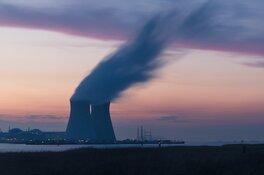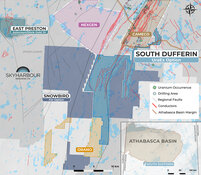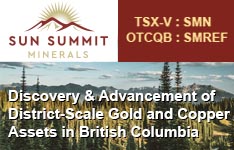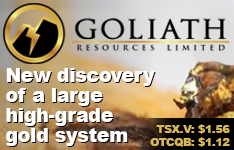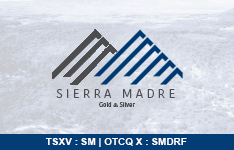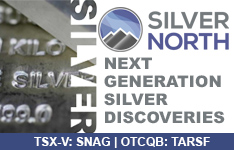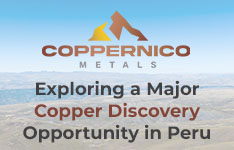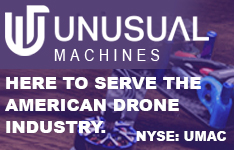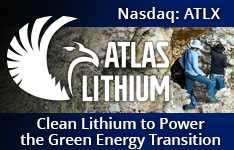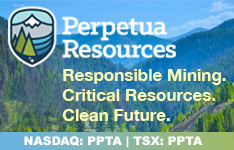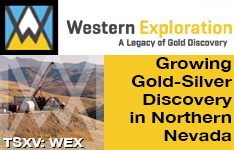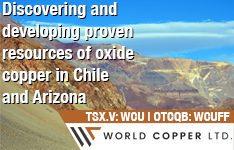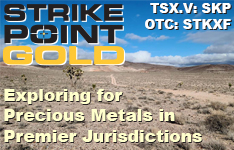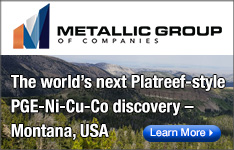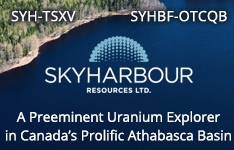A tiny uranium pellet the size of a gummy bear holds energy matching 140 oil barrels. It's humanity's most environmentally friendly, secure power resource.
Every legitimate expert acknowledges this fact.
So what's preventing universal nuclear implementation?
In brief: We smothered brilliance with bureaucracy. Since the 70s, constructing new facilities has practically been prohibited in America. It demanded $30 billion plus 15+ years battling regulatory obstacles.
I've got exciting updates. During my recent visits to Austin and Detroit, I connected with top-tier nuclear innovators. I've known these innovators for some time and consider many friends. They unanimously shared something unprecedented:
"Regulation is finally becoming a solved problem."
One entrepreneur mentioned his microreactor (a small nuclear reactor or "SMR") could become operational within a year.
This represents massive progress! We're developing an extensive analysis about SMRs and approximately twelve startups racing to launch one. More information coming soon.
Today, let's examine remaining nuclear "challenges." What about waste management? And fuel acquisition? We'll explore entrepreneurs tackling both issues.
First, a quick overview of major regulatory shifts.
In 1974, a bureaucratic entity called the Nuclear Regulatory Commission (NRC) emerged. Guess how many innovative reactor designs it's approved since inception?
None!
Just two reactors have begun commercial operations during the NRC's existence, compared to 133 beforehand.
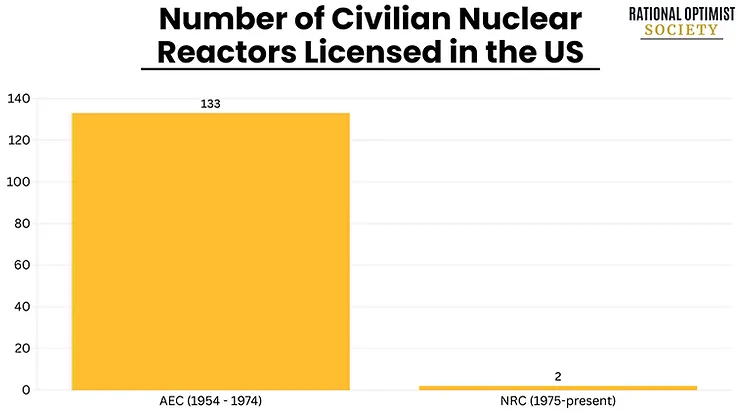
We're finally addressing this imbalance. The President has authorized four executive directives to accelerate nuclear development. These orders initiate five significant changes:
Change 1: They establish a target of expanding America's nuclear capacity fourfold by 2050.
Change 2: They accelerate "advanced nuclear" development (specifically small modular reactors or "SMRs") through test programs and expedited environmental assessments. They mandate the NRC to authorize new reactors within 18 months.
Change 3: They instruct the Department of Energy (DoE) to sanction at least three reactors before mid-2026. Essentially, Trump wants three SMRs functioning for America's 250th anniversary.
Change 4: They classify nuclear facilities powering AI operations as "defense-critical infrastructure." Constructing nuclear-powered computing centers on military installations creates a brilliant workaround. It potentially enables projects to bypass lengthy NRC evaluations.
Change 5: Most crucially in my assessment: They request the NRC to reconsider its "As Low as Reasonably Achievable" (ALARA) regulation. You experience more radiation consuming a single banana than living beside a nuclear plant for twelve months. Yet under ALARA guidelines, even that isn't considered sufficiently safe!
This "zero banana rule" has effectively prohibited nuclear construction in America. I believe the President should have commanded the NRC to eliminate this rule completely. Nevertheless, this represents advancement.
Nuclear entrepreneurs have anticipated this opportunity throughout their careers.
As Matt Loszak, founder of Aalo Atomics said, "We just have to wait for the executive orders to be implemented and we're off to the races."
In Detroit, Valar Atomics founder Isaiah Taylor said. . .
"The problem is no longer in the policy side. It's now in the engineering side."
One engineering challenge involves fuel acquisition.

Fuel access concerned many entrepreneurs I encountered. Even if prepared to activate their microreactors immediately, many would face obstacles. They lack necessary fuel.
How did this happen? Because America regulated its domestic nuclear fuel sector into extinction, surrendering supply chain control to Russia and China. This scenario mirrors what occurred with drone technology.
Converting uranium from extraction to reactor-ready involves four fundamental stages:
- Mining. Organizations like Cameco Corp. (CCO:TSX; CCJ:NYSE) (Canada) mine uranium in locations including Canada, Kazakhstan, Australia, Namibia, Niger, and Russia. These six nations produce over 85% of global uranium. Raw materials undergo processing into a substance called yellowcake.
- Conversion. Yellowcake undergoes milling and conversion into uranium hexafluoride (UF6) enabling gasification for enrichment. Orano (France) and Rosatom (Russia) dominate over 50% of this market.
- Enrichment. Nuclear "gas" undergoes enrichment through centrifugal spinning. Three corporations, Urenco (European consortium), Orano, and Rosatom control the enrichment market.
- Fuel creation. Companies including Westinghouse (U.S.) and Framatome (France) compress and heat enriched uranium powder into solid ceramic pieces.
America possesses abundant underground uranium reserves. However, excessive regulation has minimized processing capabilities.
By 2023, 99% of fuel utilized in U.S. reactors was imported — with substantial quantities from Russia.
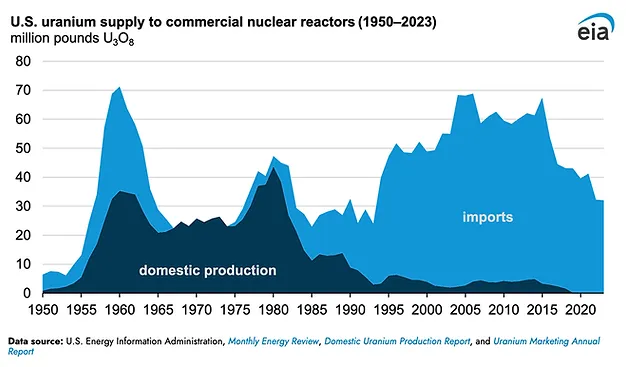
Meet innovators addressing this crisis . . .
Scott Nolan, partner at Peter Thiel's investment firm Founders Fund, was among earliest backers of Radiant Nuclear, a venture developing portable microreactors. But Radiant encountered a major obstacle: fuel scarcity.
Specifically, limited access to high-assay low-enriched uranium (HALEU), premium uranium ideal for powering most microreactors.
Only Russia and China manufacture HALEU at scale. However, the U.S. plans to prohibit Russian uranium imports starting 2028. Leaving China — an unpredictable trade partner.
Accessing HALEU in America resembles Soviet-era bread queues. The DoE maintains limited reserves. Entrepreneurs must complete paperwork, endure months-long waits, and hope for allocations – merely to test prototypes. "Please sir, can I have some more?"
Scott Nolan established General Matter to produce HALEU fuel and revitalize America's enrichment industry.
Meeting Scott at Detroit's Reindustrialize summit, he shared "I spent over a year at Founders Fund searching for an American enrichment company to invest in, only to find there wasn't one. So, we built our own."
General Matter assembled elite professionals from organizations including SpaceX, Tesla, Anduril, and several American national nuclear laboratories. It was among four companies selected by the DoE to initiate American HALEU production.
If General Matter succeeds, it will achieve for uranium enrichment what SpaceX accomplished for rocketry: restore American competitiveness.
J.D. Rockefeller amassed historic wealth through Standard Oil.
Not through oil drilling. But by controlling the supply chain's most valuable component: crude refinement.
Standard Nuclear aims to replicate this for nuclear energy. Its mission: become a scalable, affordable, entirely American nuclear fuel provider — the nuclear industry's Standard Oil.
HALEU, optimal fuel for next-generation reactors, often comes encased in ceramic protection called TRISO, maintaining fuel density and safety.
TRISO appears as indestructible billiard ball-sized spheres. Each contains sufficient energy to power thousands of households.

TRISO resists melting. It prevents leakage. It contains radioactivity internally, even during extreme accidents. That's why the DoE designates it Earth's most robust nuclear fuel. Even the NRC acknowledges it as 'functional containment.'
One entrepreneur described TRISO's remarkable properties: "You know those giant concrete containment domes that surround old reactors in case something goes wrong? With TRISO, we've basically engineered the dome into every single fuel particle."
TRISO provides microreactors with clean, compact, uninterrupted power, eliminating meltdown risks and massive containment structures.
China recently conducted safety testing by deactivating a nuclear reactor's cooling system. The TRISO-powered reactor absorbed heat. The core cooled naturally. No alternative nuclear fuel demonstrates this capability.
Predictably, China remains the sole nation producing significant TRISO quantities.
Standard Nuclear will help America catch up.
Standard Nuclear represents genuine innovation. The company emerged following another company's bankruptcy after its primary investor died. The team was commercializing TRISO, previously produced exclusively in America's national laboratories.
Following the investor's death, their commitment remained so strong that over 40 employees continued working approximately eight months without compensation. Some sold homes or downsized to maintain operations.
Their perseverance succeeded. In 2024, the organization reemerged as Standard Nuclear with $42 million in funding.
Standard Nuclear operates from Oak Ridge, Tennessee, formerly known as "Atomic City," where Manhattan Project uranium enrichment occurred. It currently represents the largest TRISO manufacturing facility outside China.
Standard Nuclear recently secured $5 million in contracts and established offtake agreements exceeding $100 million with microreactor ventures including Radiant, Antares, and NANO Nuclear Energy Inc. (NNE:NASDAQ).
"ROS never addresses the problem of nuclear waste storage."
ROS Member John D highlighted this omission. Let me correct this.
Imagining radioactive material seeping from corroded containers seems frightening. Reality shows nuclear waste represents a resolved challenge. Innovators are transforming it into another opportunity.
Fundamentals: All nuclear waste ever generated throughout America — spanning 60 years — would occupy a single football field, stacked under 20 feet high.
Atomic byproducts have never harmed any American. Spent materials remain securely stored in sealed containers across 60+ locations throughout 34 states.
Why merely store it? SMR startups are creating reactors utilizing waste. Oklo Inc.'s (OKLO:NYSE) Aurora microreactor, compact enough for a spacious living room, converts used fuel into fresh energy. Like automobiles running on exhaust fumes!
The most frustrating aspect regarding nuclear waste "problems" involves ignoring existing solutions for 60 years. Argonne National Laboratory constructed reactors capable of recycling nuclear waste into fuel during the 1960s!
Why isn't fuel recycling standard practice? Blame political decisions. President Carter suspended reprocessing during the 1970s. Reagan reversed the prohibition, but companies had already pivoted elsewhere.
Consider Deep Isolation. I recently spoke with CEO Rod Baltzer. His company developed a methodology for permanently securing nuclear waste underground, utilizing directional drilling technology and their Universal Canister System.
Deep Isolation drills tunnels approximately pizza-box width into solid rock formations, reaching three miles beneath surface level. The tunnel's bottom curves, creating an L-shaped pathway. They then insert sealed, corrosion-resistant containers filled with nuclear waste, designed for millennial timeframes.
Deep Isolation ensures waste disappears safely, permanently, and economically.
The genuine threat isn't nuclear waste. It's unrealized nuclear facilities, leaving us dependent on dirtier energy alternatives. Innovators are transforming perceived problems into productive power solutions.
Envision July 4, 2026. . .
We're celebrating America's 250th anniversary. The initial three microreactors operate on American soil. These engineered marvels generate clean, safe, "constantly available" energy.
After meeting numerous nuclear entrepreneurs, I recognize their determination toward this objective. Teams sleep in production facilities. Engineers work 18-hour shifts. Founders dedicate their lives toward achieving that July 2026 milestone.
America's prosperous future requires expanded energy access, not reduction. Remember: Rich, low-energy nations don't exist.
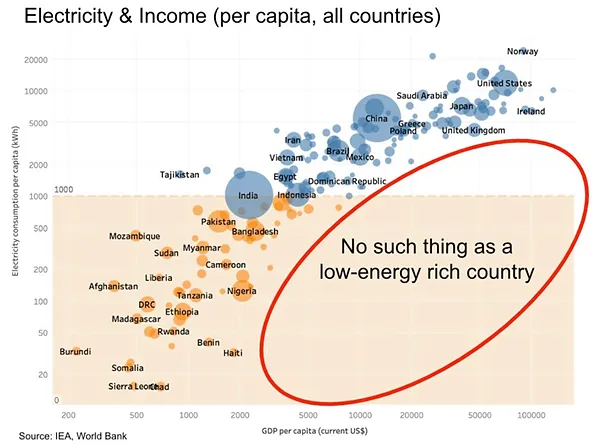
In 1973 President Nixon proposed establishing 1,000 nuclear power plants before 2000. Better delayed than abandoned.
With 1,000 microreactors distributed across America, we could desalinate seawater and transform arid deserts into fertile land. Following hurricanes, mobile reactors could deploy, powering medical facilities and water systems within hours.
Building this future depends on communities nationwide embracing nuclear technology.
That's where your role begins. Demonstrate to friends and relatives that nuclear represents our cleanest, safest energy resource. Challenge misinformed opposition.
Address questions resembling this inquiry: "What might terrorists accomplish capturing a microreactor?" Simple answer: they'd have years of clean energy, but concerns about weaponization are unfounded.
Perhaps most importantly, share nuclear innovation stories with younger generations! The Second Nuclear Age will create talent shortages. It requires engineers, technicians, machinists, and policy advocates.
The primary career aspiration among children today is... social media influencer. Disappointing. Let's transform that to nuclear engineer!
At the Rational Optimist Society, we're embracing nuclear technology and much more. We help our members understand, appreciate, and take advantage of the innovations revolutionizing our world for the better, so they can confidently flourish as change continues to accelerate.
| Want to be the first to know about interesting Uranium investment ideas? Sign up to receive the FREE Streetwise Reports' newsletter. | Subscribe |
Important Disclosures:
- As of the date of this article, officers and/or employees of Streetwise Reports LLC (including members of their household) own securities of Cameco Corp.
- Stephen McBride: I, or members of my immediate household or family, own securities of: None. My company has a financial relationship with: None. My company has purchased stocks mentioned in this article for my management clients: None. I determined which companies would be included in this article based on my research and understanding of the sector.
- Statements and opinions expressed are the opinions of the author and not of Streetwise Reports, Street Smart, or their officers. The author is wholly responsible for the accuracy of the statements. Streetwise Reports was not paid by the author to publish or syndicate this article. Streetwise Reports requires contributing authors to disclose any shareholdings in, or economic relationships with, companies that they write about. Any disclosures from the author can be found below. Streetwise Reports relies upon the authors to accurately provide this information and Streetwise Reports has no means of verifying its accuracy.
- This article does not constitute investment advice and is not a solicitation for any investment. Streetwise Reports does not render general or specific investment advice and the information on Streetwise Reports should not be considered a recommendation to buy or sell any security. Each reader is encouraged to consult with his or her personal financial adviser and perform their own comprehensive investment research. By opening this page, each reader accepts and agrees to Streetwise Reports' terms of use and full legal disclaimer. Streetwise Reports does not endorse or recommend the business, products, services or securities of any company.
For additional disclosures, please click here.


